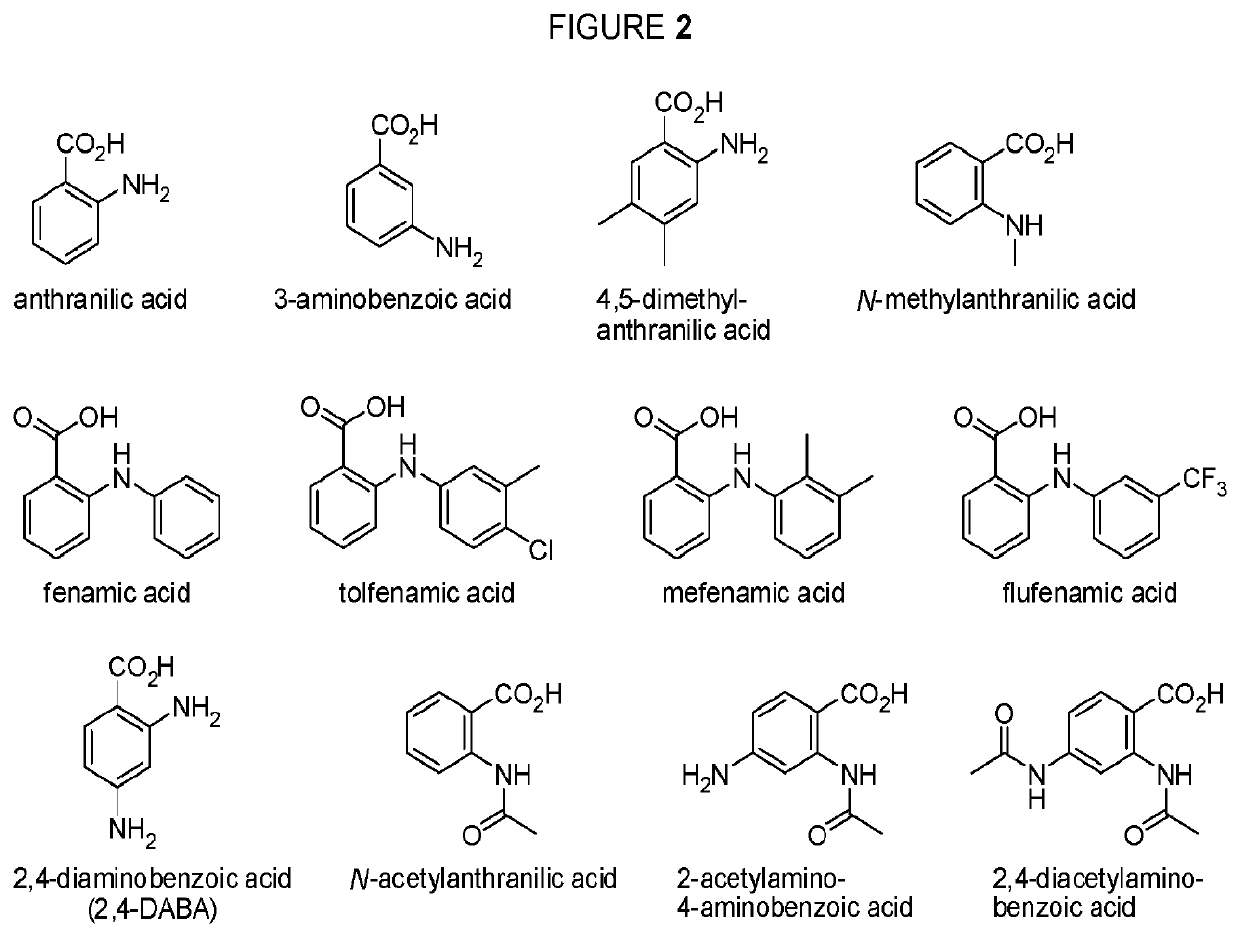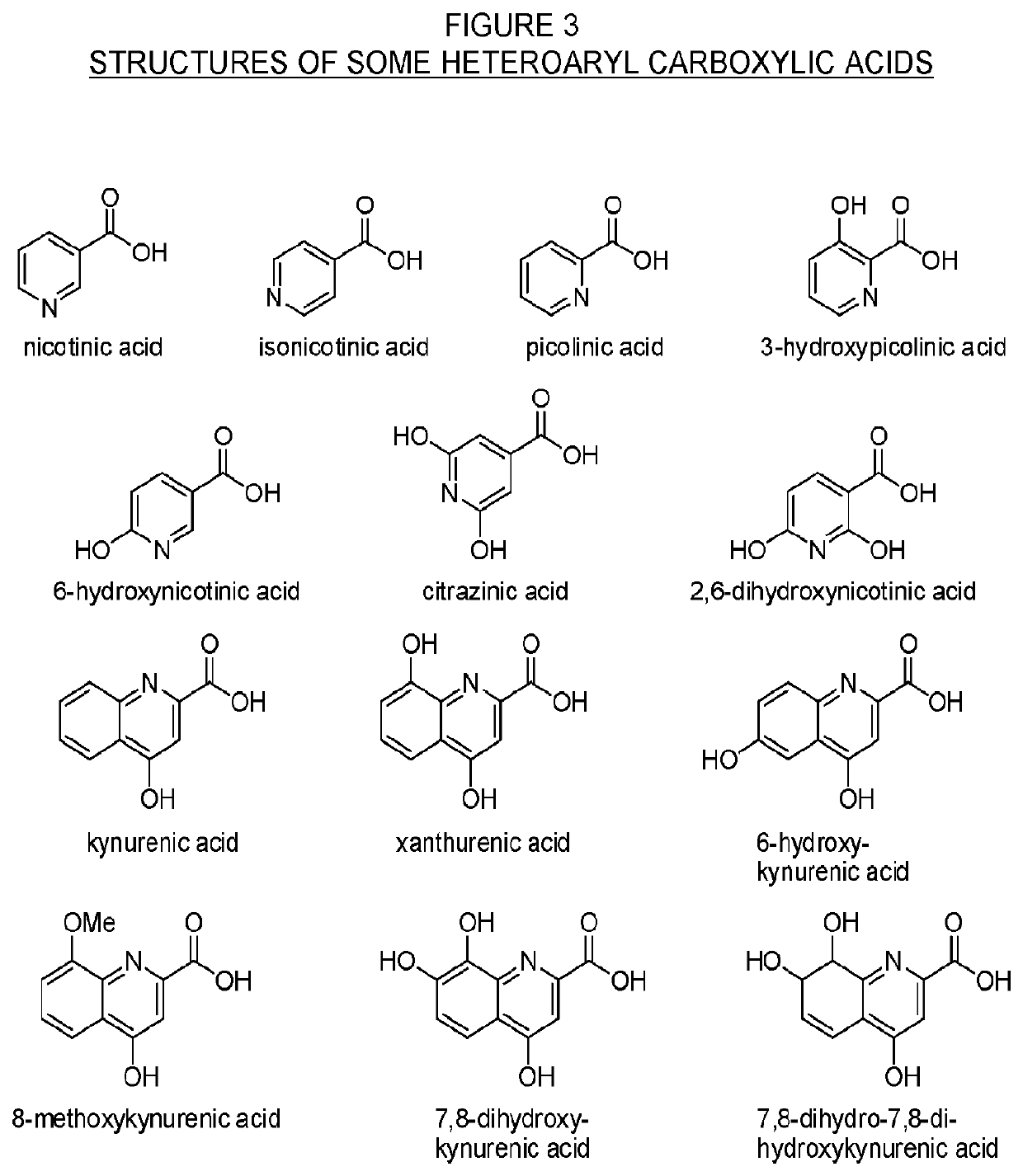Dextrorphan prodrugs and processes for making and using them
a technology of diphenhydramine and prodrugs, applied in the field of diphenhydramine prodrugs and processes for making and using them, can solve the problems of high addictiveness, euphoria, and abuse with far reaching social and health related consequences, and achieve the effect of reducing the potential for overdose or abus
- Summary
- Abstract
- Description
- Claims
- Application Information
AI Technical Summary
Benefits of technology
Problems solved by technology
Method used
Image
Examples
example 1
of 3-Val-dextrorphan 6
[0295]
[0296]To a solution of dextrorphan 1 (0.13 g, 0.505 mmol), Boc-Val-OH (0.12 g, 0.55 mmol), HOBt (0.072 g, 0.53 mmol) and trimethylamine (0.175 mL, 1.26 mmol) in DMF (7 mL) was added a solution of BOP (0.235 g, 0.53 mmol) in DMF (3 mL) at 0° C. After the addition, the reaction mixture was stirred overnight at room temperature. The reaction was quenched with water (1 mL) and the solvent was evaporated under reduced pressure. The residue was taken in EtOAc (100 mL), washed with 5% aq. NaHCO3 (1×70 mL), 10% aq. NH4Cl (1×60 mL) and brine (1×60 mL). The organic layer was dried over anhydrous Na2SO4 and evaporated to dryness. The solid residue was purified by preparative HPLC to give 3-(Boc-Val)-dextrorphan 3.
[0297]3-(Boc-Val)-dextrorphan 3 was dissolved in dioxane (3 mL) and to the solution was added 4N HCl in dioxane (9 mL). The reaction mixture was stirred at room temperature for 3 hours. The solvent was evaporated under reduced pressure, the residue was co-e...
example 2
of 3-(N-acetyl-Val)-dextrorphan 68
[0298]
[0299]A solution of 3-Val-dextrorphan 6 (0.095 g, 0.22 mmol) and TEA (0.18 mL, 1.32 mmol) in CH2Cl2 (5 mL) was cooled down to 0-5° C. and a solution of acetyl chloride (0.062 mL, 0.88 mmol) in CH2Cl2 (1 mL) was added dropwise. After the addition of acetyl chloride, the reaction mixture was stirred at 0° C. for 1.5 hours. Solvent was evaporated under reduced pressure and the residue was purified by preparative HPLC to give 3-(N-acetyl-Val)-dextrorphan.
[0300]To a solution of 3-(N-acetyl-Val)-dextrorphan in dioxane (2 mL) was added 4N HCl in dioxane (2 mL). The solution was stirred at room temperature for 10 minutes and then evaporated to dryness under vacuum to give the hydrochloride salt 68 as waxy solid (0.054 g, 56% yield)
Example 3: Synthesis of 3-(N-acetyl-Val-OCH2OC(O))-dextrorphan 41
[0301]
3-(Boc-Val-OCH2OC(O))-dextrorphan 38
[0302]A solution of chloromethyl chloroformate 31 (0.135 mL, 1.5 mmol) in CH2Cl2 (2 mL) was added to a solution of de...
example 6
n of Oral PK Profiles of Conjugates of Dextrorphan in Rats
[0310]Conjugates of dextrorphan and dextrorphan tartrate comparator compound were dissolved in an appropriate vehicle and administered in rats via oral gavage. A summary of the doses and vehicles used for each compound is provided in Table 1. Whole blood samples were collected via retro-orbital bleeding at 0.25, 0.5, 1, 2, 3, and 4 hours postdose. Blood samples were centrifuged and the resulting plasma samples were collected for analysis of dextrorphan concentrations by LC-MS / MS. PK profiles comparing the plasma concentrations of dextrorphan released from the conjugates and from the dextrorphan tartrate comparator are shown in FIGS. 13-16.
PUM
| Property | Measurement | Unit |
|---|---|---|
| temperature | aaaaa | aaaaa |
| chemical structure | aaaaa | aaaaa |
| enantiomer | aaaaa | aaaaa |
Abstract
Description
Claims
Application Information
 Login to View More
Login to View More - R&D
- Intellectual Property
- Life Sciences
- Materials
- Tech Scout
- Unparalleled Data Quality
- Higher Quality Content
- 60% Fewer Hallucinations
Browse by: Latest US Patents, China's latest patents, Technical Efficacy Thesaurus, Application Domain, Technology Topic, Popular Technical Reports.
© 2025 PatSnap. All rights reserved.Legal|Privacy policy|Modern Slavery Act Transparency Statement|Sitemap|About US| Contact US: help@patsnap.com



